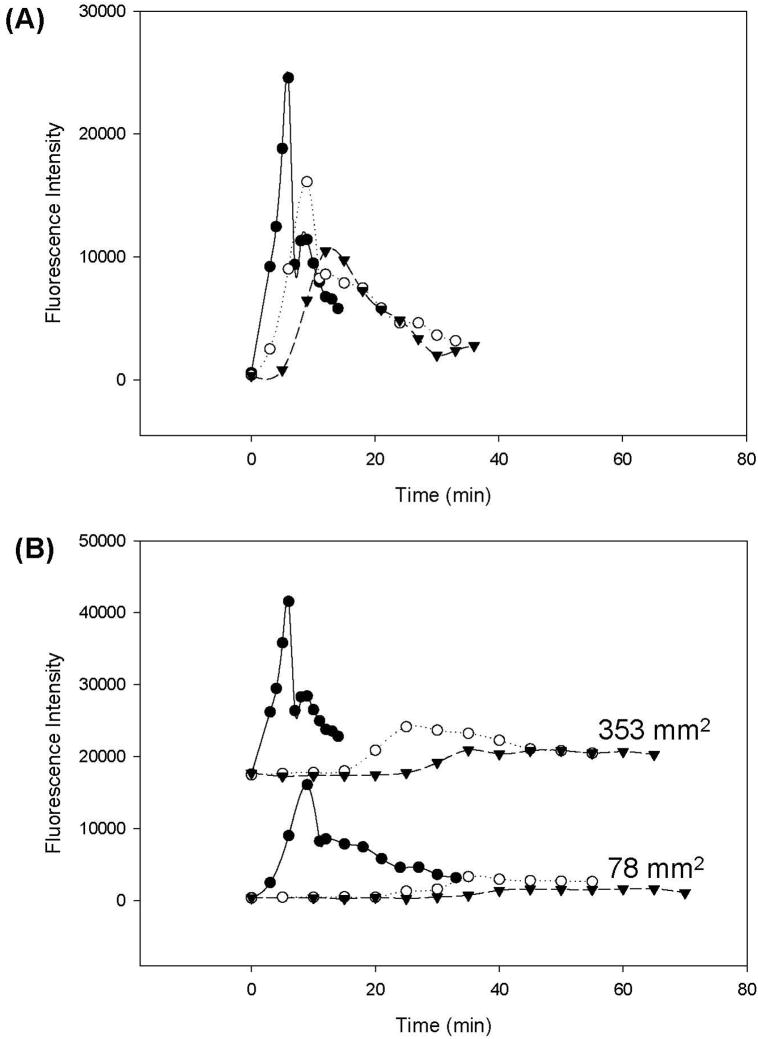Figure 4.
Kinetics of thrombin (FIIa) production by contact activation of recalcified plasma using glass procoagulant particles (following activation protocol outlined in refs. [45, 47]). Panel A collects results obtained with water-wettable particles (water contact angle θ < 10°) at three different surface areas: 353 mm2 (solid line), 78 mm2 (dotted line), and 15 mm2 (dashed line). Panel B collects results obtained with water-wettable glass particles (solid line), aminopropyltriethoxysilane-treated glass particles (θ ~ 70°, dotted line), or octadecyltrichlorosilane-treated glass particles (θ ~ 110°, dashed line) at either 353 mm2 (upper series) or 78 mm2 (bottom series) procoagulant surface area (see annotations). Ordinate plots fluorescence intensity (FIIa concentration) at various time points following procoagulant-plasma contact. FIIa kinetics exhibit dependence on both procoagulant surface area and surface energy, with higher surface area of any particular procoagulant yielding an earlier onset of FIIa production and increased magnitude of FIIa bolus produced (Panel A). Plasma coagulation was coincident with peak FIIa output, after which FIIa concentration decayed. Decreasing hydrophilicity (decreasing procoagulant efficiency, see Section 1.2) correlated with decreasing FIIa bolus and delayed onset of FIIa production (Panel B). FIIa concentration was measured using a fluorogenic assay that employed Z-Gly-Gly-Arg-(7-amido-4-methylcoumarin) as a substrate (Bachem Biosciences; 20 μl of Hepes Buffer and 10 μl of a 2.5mM stock solution of the fluorogenic substrate were added to a polystyrene culture dish well containing a 40 μl aliquot of plasma. After 15 min incubation at 37°C, 50ml of 20% glacial acetic acid was used to quench the reaction. Fluorescence intensity was measured in sterile Corning black-polystyrene clear-bottom 96-well plates in an excitation wavelength of 390 nm and an emission wavelength of 460 nm).

